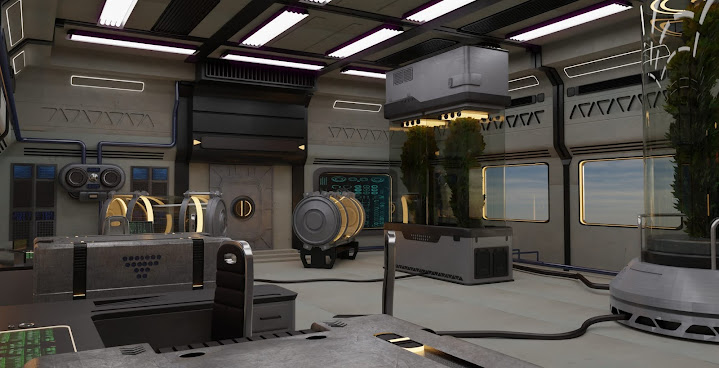This is a continuation of a post (#1) that I've created about modeling a 3d SCI-FI LAB. Here's some pics of the final result (you can see in my behance portfolio)
6) I started at the back of the lab.
The height of the laboratory is 4 meters. I selected all the objects, so you can see that they are separate and will be used across the room...
7) ..Then, I drew a wall and then another wall continuation that will be received by the "Middle" part...
..when united, they are like this (sounds like a unique part, right?)
8) I put some lights beyond the already designed. And the tips: Use blender's Array modifier so you don't have to draw the same thing 50 times. Also, if you didn't notice, I used blender's mirror modifier.. the left is equal to the right side (notice the doors, the ceiling.. they are mirrored).
Also, it's time to draw the tubes, vents, and control panels of the lab:
9) Let's put the tool-boxes, the tables
(all they're replications of the same object)
The result so far...
10) Modeling the hardware(s). Here's my reference:
Source: Youtube
Source: Depositphotos
..reflect/mirror/array some objects again
..connect with the middle part
These are the textures used: about ~100Mb in size. 88Mb is the hdri's size.
Some "same " textures are "recycled" to optimize the ram needed to
render this scene. Most are 2k.
Leather texture: used in the chairs
Aluminum/Metal texture: you bet it.Used in the walls, and most "steel" objects.
Matrix texture: control panel and pc screens.
Keyboard texture: you bet.
loc00184-22-8k: hdri image for the 'space' / 'clouds' background.
I'm following a kind of "gray" palette.
It's functional? Yes - Color palettes are used everywhere, especially in movies:
(source: https://digitalsynopsis.com/ )
Texture's sources:



























































